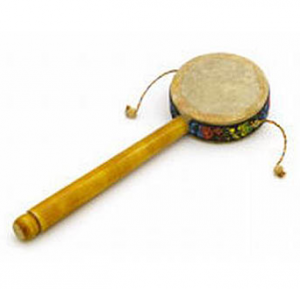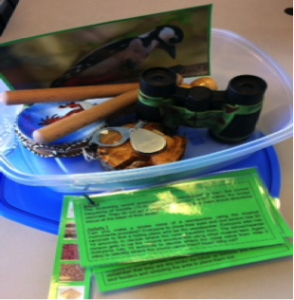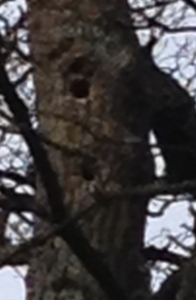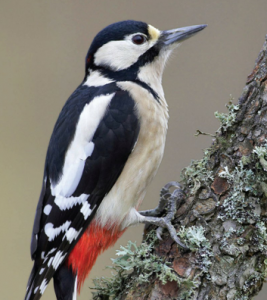The location of this (temporary ‘waymarked’) geocache based on Stirling University’s campus was chosen because a Great Spotted Woodpecker has been seen and heard in the area. The woodpecker has made a home in a nearby tree making the activities place-responsive.
This area is easily accessible for children because there is plenty of wooded area for them to explore, creating bird feeders and locating new places for the woodpeckers to visit.
The contents of the cache were chosen to encourage children to engage with the task though active learning. The initial activity invites children to understand the sound of the woodpecker and the way in which sound travels, whilst allowing them to discover the layout of the woodland through a fun and interactive game. Using the claves and whirling drum provided, children hide in the wooded area making the drumming sound of the woodpecker whilst the remaining children seek the ‘woodpecker’ and identify where the sound originated from.
[ On the day we trialled this cache, we used the drums to make a sound and the local Great Spotted woodpecker actually came along to investigate us. We guess he thought we were some newly arrived competition! But we got a great view of the bird. ]
The second activity allows children to look at the environment through binoculars which allow them to highlight details of the animal and plant species, whilst investigating the location of the woodpecker’s natural habitat. This activity also allows children to discuss why they think the woodpecker chooses to make its home in these locations, e.g. higher in the tree to keep away from predators and potentially more dead wood closer to the top of the tree. The children are asked specifically to try and identify a nearby tree whereby the woodpecker has made nests in subsequent years.
Can you see the nest holes below? It is amazing that the woodpecker can create a nest hole in such hard wood – this solid oak.
The third activity provides children with information on the woodpeckers’ behaviours towards hunting for food. Children are asked to discuss the food chain, discovering ways in which the population of the woodpecker can be increased in a specific area, such as through feeding and reproduction. Recent research papers can subsequently provide discussion opportunities as follow up lessons identifying these aspects and encourages learning for sustainability.
Each of the activities encourages discussion and collaborative group work, allowing children to build on their confidence and self-esteem whilst working with their peers. It also encourages discovering the importance of the natural habitat and feeding grounds for animals such as the Great Spotted Woodpecker. This geocache provides a basis for many opportunities for further inquiry-based learning both in and out of the classroom.
Cache Creators: Ailsa Robertson and Donna Gray






